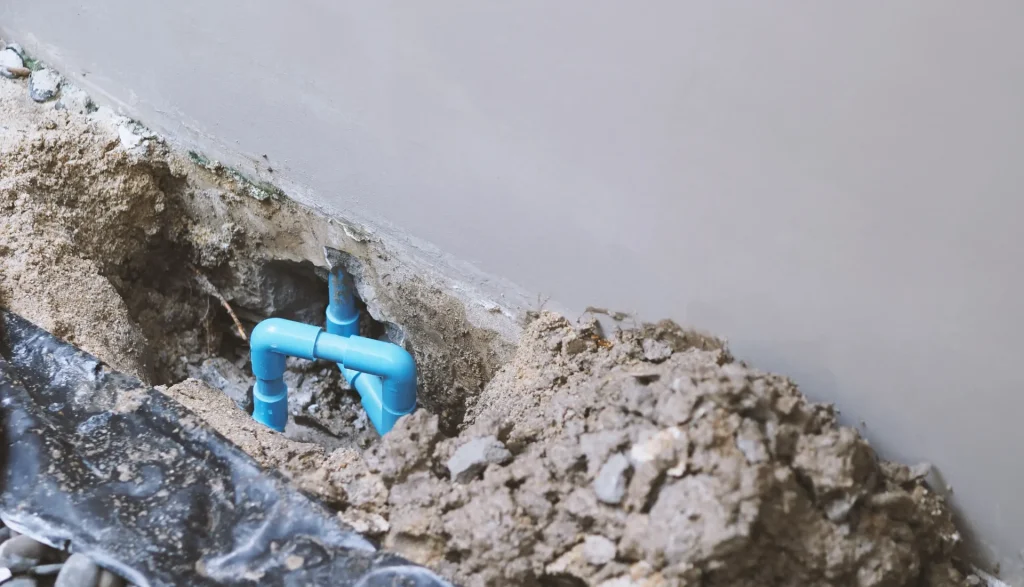Storm Drain Maintenance Tips to Protect Your Foundation
Storm drains aren’t exactly exciting. They’re not something most homeowners brag about or even think about—until the water starts pooling where it shouldn’t. The truth is, storm drain maintenance tips is one of those behind-the-scenes jobs that can make or break your home’s foundation.
Skip it, and you’re risking cracks, leaks, and repairs that cost way more than regular upkeep ever would. Do it right, and your home stays dry, stable, and safe.
So let’s talk about how to actually take care of your storm drains before a rainy season (or sudden Texas downpour) makes you wish you had.

Why Storm Drain Maintenance Matters
Think of storm drains like the veins of your property. They collect rainwater from your roof, yard, or driveway and carry it away so it doesn’t linger near your foundation. When they get clogged with leaves, dirt, or even kids’ toys that somehow find their way in, the water’s got nowhere to go.
And what happens then? It pools around your house. Over time, that standing water can seep into the soil, soften the ground, and put extra pressure on your foundation walls. That’s where the cracks and leaks start.
If you want to dive deeper into drainage solutions that can keep your foundation solid, check out this guide on drainage services.
Simple Storm Drain Maintenance Tips You Can’t Skip
Let’s be honest, nobody loves spending a weekend dealing with drains. But the good news? Most of the upkeep isn’t complicated. A few hours a couple of times a year can save you from foundation damage that runs into the tens of thousands.
Here’s what to focus on:
1. Keep Drains Clear of Debris
Leaves, branches, dirt, and even trash can build up in storm drains faster than you’d think. After a big storm—or even just during fall—it’s smart to pop open the grate and clear things out.
If water’s already backing up, don’t wait. A clogged drain is a sign that water’s got nowhere to escape.
2. Flush the System with a Hose
Sometimes drains look clear from the surface but have gunk deeper down. Hook up a garden hose and run water through the drain for a few minutes. If it flows easily, you’re good. If it backs up or runs slow, you may need a deeper clean.
3. Check for Cracks or Damage
Concrete and metal components of your drain system can wear down over time. Look for cracks in the basin or loose connections in the piping. Small problems caught early are cheap to fix. Wait too long, and they turn into big ones.
4. Inspect After Heavy Rain
The best time to check how well your storm drains are working is right after a heavy rain. Is water flowing away from your house? Or is it pooling in low spots near your foundation? A quick walk-around tells you a lot.
5. Don’t Forget the Gutters and Downspouts
Your roof is often the main source of stormwater. If gutters are clogged or downspouts don’t extend far enough from your house, the extra water overloads your storm drains. Keeping gutters clean is step one in storm drain maintenance.
When to Call in the Pros
Sometimes, maintenance is as simple as scooping out leaves. But if you notice these signs, it might be time to call a professional:
- Repeated clogs no matter how much you clean.
- Water pooling near the house after every rain.
- Basement leaks or damp smells.
- Visible sinkholes or erosion near drains.
In those cases, pros can bring in tools like augers, hydro-jetting, or even camera inspections to figure out what’s going on. And if repairs are needed, it’s a lot better to handle them before your foundation takes a hit.
How Storm Drain Maintenance Protects Your Foundation
A solid foundation keeps your home safe and level. When stormwater isn’t draining properly, soil around your foundation expands and contracts too much. Over time, that pressure leads to cracks, leaks, and uneven settling.
Storm drain maintenance isn’t just about keeping water away—it’s about preserving the entire structure of your home. And once foundations start failing, fixing them is no small job.
That’s why many homeowners invest in preventive solutions like French drains or channel drains, which you can explore in more detail with a trusted drainage contractor.
Seasonal Maintenance Checklist
Here’s a quick cheat sheet you can follow each season:
Spring:
- Clear debris from winter storms.
- Flush drains to check water flow.
Summer:
- Inspect for cracks or pipe damage.
- Watch out for overgrown landscaping clogging drains.
Fall:
- Remove fallen leaves before heavy rains start.
- Double-check gutters and downspouts.
Winter:
- Look for ice blockages if temps dip below freezing.
- Inspect drains after snow or ice melt.
Keep this routine, and your foundation will thank you.
Final Thoughts
Storm drain maintenance doesn’t have to be complicated, but it does need to be consistent. A little effort now can prevent a lot of stress later—like flooding, foundation cracks, and massive repair bills.
So don’t wait until the next storm to wonder if your drains are working. Take a look today, clear out what you can, and if you see anything worrying, reach out to a drainage pro.
Your foundation is literally holding up your house. It deserves that extra attention.
FAQ
At least twice a year—once in spring and once in fall. More often if you live in a heavy rainfall area or under lots of trees.
Yes. Water that can’t drain away pools near your home, causing soil erosion and foundation cracks.
Basic cleaning is DIY-friendly, but for recurring clogs or system repairs, call a pro.
Flush them with a garden hose and watch how the water flows. If it backs up, you may have a blockage.
Absolutely. Clogged gutters push extra water into storm drains, overwhelming the system and leading to clogs.
